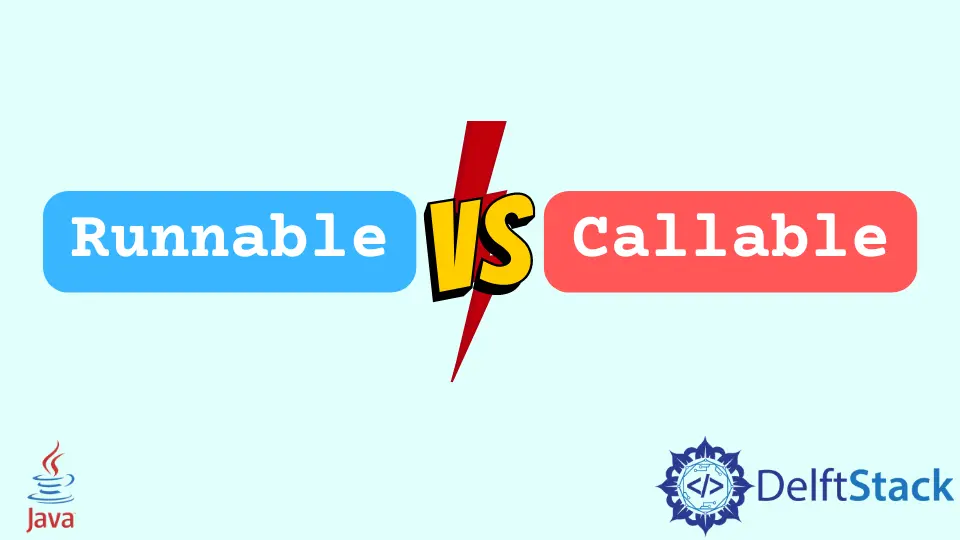Runnable VS Callable Interface in Java
-
The
RunnableInterface in Java -
The
RunnableInterface Example in Java -
The
CallableInterface in Java -
The
CallableInterface Example in Java -
RunnableVSCallableInterface in Java

This tutorial introduces the difference between Runnable and Callable interfaces with examples in Java.
The Runnable Interface in Java
Runnable is an interface used to create and run threads in Java. It has a single abstract method run() only and is also known as a Functional interface.
You can see the signature of the Runnable interface and its SAM method below.
@FunctionalInterface public interface Runnable
void run() // Single Abstract Method
The Runnable Interface Example in Java
Every class that wants to create and run a thread must implement either a Runnable interface or extend the Thread class.
The Runnable interface provides a run() method that must be overridden in the base class. This method executes implicitly by the start() method. See the example below.
public class SimpleTesting implements Runnable {
public static void main(String[] args) {
new Thread(new SimpleTesting()).start();
}
@Override
public void run() {
System.out.println("Running a thread");
}
}
Output:
Running a thread
The Callable Interface in Java
The Callable is an interface and is similar to the Runnable interface. It also contains a single abstract method, call().
This interface is designed for classes whose instances are potentially executed by another thread. The signature of the Callable interface and method is below:
The Executors class contains utility methods to convert to Callable classes from other common forms.
@FunctionalInterface public interface Callable<V>
V call() throws Exception
The Callable Interface Example in Java
We implemented the Callable interface and overridden its call() method. We can get any object to the call() method.
See the example below.
import java.util.concurrent.Callable;
import java.util.concurrent.ExecutionException;
import java.util.concurrent.ExecutorService;
import java.util.concurrent.Executors;
import java.util.concurrent.Future;
public class SimpleTesting implements Callable<Integer> {
public static void main(String[] args) throws InterruptedException, ExecutionException {
ExecutorService executorService = Executors.newSingleThreadExecutor();
SimpleTesting st = new SimpleTesting();
Future<Integer> future = executorService.submit(st);
int result = future.get().intValue();
System.out.println("product " + result);
}
@Override
public Integer call() throws Exception {
int product = 23 * 12;
return product;
}
}
Output:
product 276
Runnable VS Callable Interface in Java
The following table contains some points to understand Java’s Runnable and Callable interface.
Runnable |
Callable |
|---|---|
The implementing class must override its run() method accordingly. |
The implementing class must override its call() method accordingly. |
The return type of the run() method is void hence does not return anything to the caller. |
The return type of the call() method is an Object. It can be a String, an Integer, etc. |
The run() method does not throw any exception. |
The call() method can throw an exception during execution. |
| It can be used to create threads in Java. | It cannot be used to create threads. |